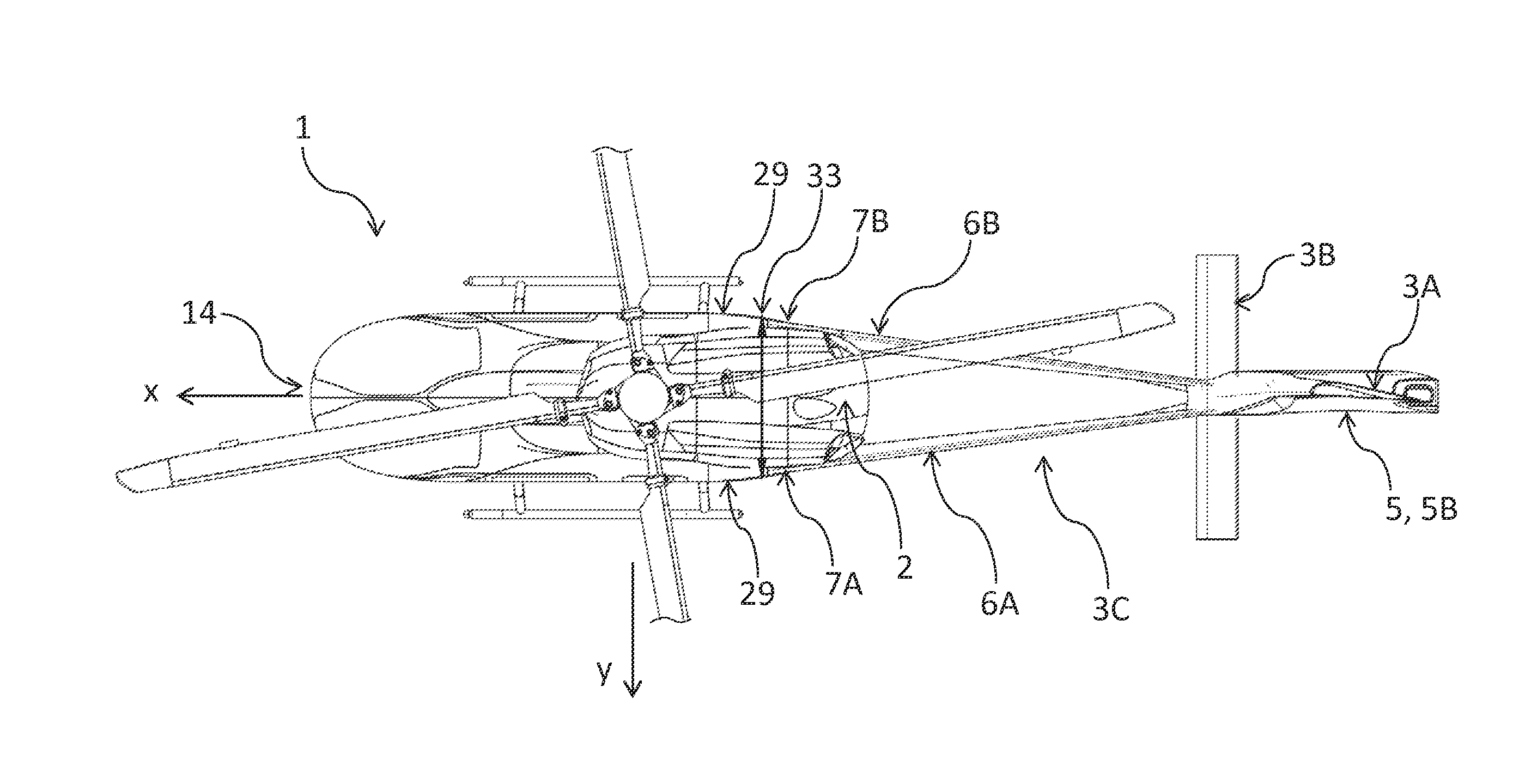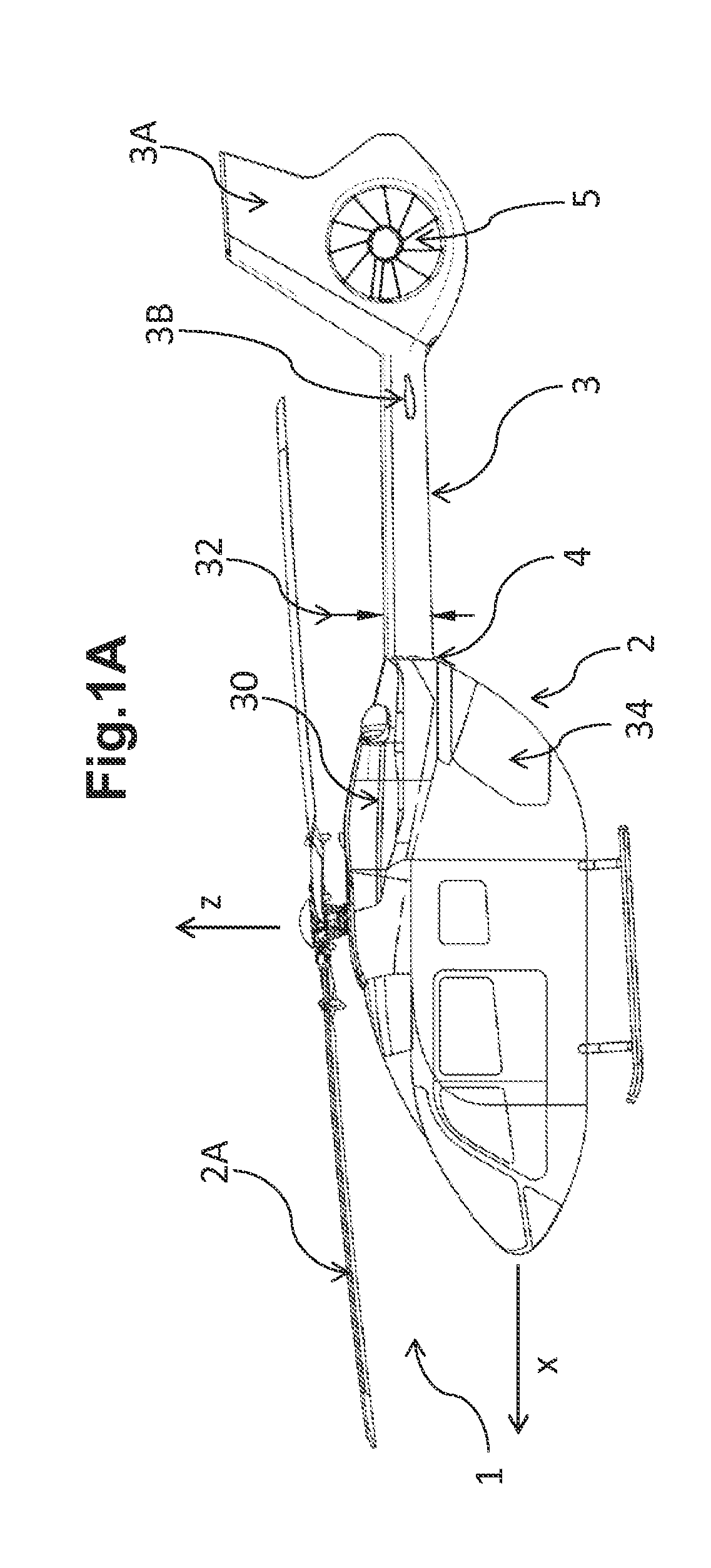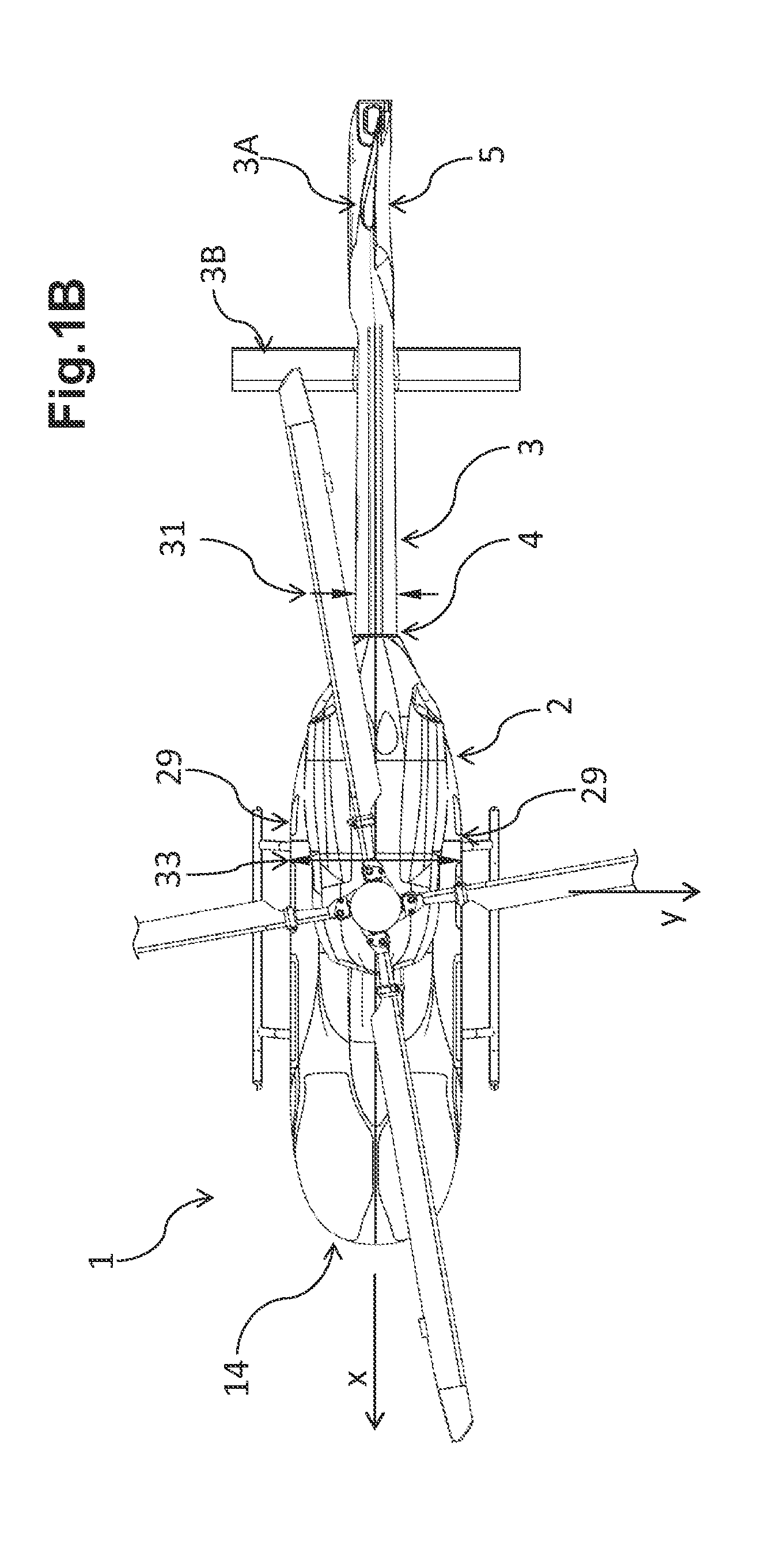Rotary wing aircraft with a multiple beam tail
a technology of rotary wing aircraft and tail, which is applied in the direction of aircraft, rotorcraft, aircraft components, etc., can solve the problems of reduced bending and torsional stiffness, high root stress, and high structural complexity, and achieves the reduction of structural complexity and manufacturing costs, improve functional and operational capabilities, and improve robustness
- Summary
- Abstract
- Description
- Claims
- Application Information
AI Technical Summary
Benefits of technology
Problems solved by technology
Method used
Image
Examples
Embodiment Construction
[0082]According to FIGS. 1A and 1B a known rotary wing aircraft 1 of the helicopter type comprises a fuselage 2 and a single central tail boom 3 in conventional cantilever configuration mounted to a rear part of said fuselage 2. A main rotor 2A is mounted to a top deck of the fuselage 2. The single central tail boom 3 comprises a fin 3A and one or a plurality of horizontal planes 3B, at the very aft end of the tail boom. The single central tail boom 3 has a height 32 and a width 31 and it is attached to the rear part of the fuselage 2 at a tail boom root 4. The rear part of said fuselage 2 is provided with a rear access door 34. The fin 3A is generally vertical, is attached to a rear end of the tail boom 3 and houses a tail rotor 5 (here of Fenestron © type). The width 31 of the tail boom 3 is considerably less than a fuselage width 33. Engines 30 for driving the rotors 2A, 5 are allocated in an engine deck of the rear part of said fuselage 2.
[0083]FIGS. 2-7 illustrate embodiments o...
PUM
 Login to View More
Login to View More Abstract
Description
Claims
Application Information
 Login to View More
Login to View More - R&D
- Intellectual Property
- Life Sciences
- Materials
- Tech Scout
- Unparalleled Data Quality
- Higher Quality Content
- 60% Fewer Hallucinations
Browse by: Latest US Patents, China's latest patents, Technical Efficacy Thesaurus, Application Domain, Technology Topic, Popular Technical Reports.
© 2025 PatSnap. All rights reserved.Legal|Privacy policy|Modern Slavery Act Transparency Statement|Sitemap|About US| Contact US: help@patsnap.com



